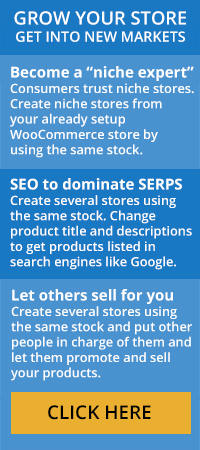If there’s one thing that’s certain about commerce, consumerism, and the sales industries in general, it’s that they are always changing. As a result, e-commerce trends seem to come and go, and if you can stay on top of them, you’ll have a significant edge over the competition. Here are 11 e-commerce trends for 2019 you should keep in mind as you think about ways to improve and grow your business.
E-commerce Is still Booming
By the year 2021, industry experts estimate that people around the globe will spend nearly $4.5 trillion dollars shopping online. When compared to the $1.85 trillion in sales recorded for 2016, it’s easy to see that e-commerce isn’t going anywhere any time soon.
Americans Prefer Online Shopping to Retail Shopping
UPS conducted a groundbreaking survey in 2016, and for the first time in history, more than half (51%, to be exact) of American shoppers preferred to shop and make purchases online. More and more retail shops are closing their doors and moving to virtual shops instead.
Marketing Emails will Get Shorter
Once upon a time, marketing emails were like novellas. Companies would use 1000 words to tell you why you should visit their sites and buy from them. As time goes on, research has revealed that people don’t take the time to read these messages, rendering them useless. As a result, it’s expected that marketing emails will get shorter and more to the point.
Personalization will be Vital
People want experiences tailored to their needs, and that’s why personalized shopping will be a continued trend throughout 2019. Things like segmenting audiences and targeted advertising campaigns will undoubtedly help businesses grow. The more personalized the experience for the consumer, the more he or she is likely to want to experience it again.
More Video Marketing
Why take the time to scroll down an entire page when you can learn the same thing in a short video? That’s how today’s consumers feel about things, and e-commerce is responding. More of today’s most successful sites have turned to video marketing to tout their wares. In fact, many of today’s biggest e-commerce companies use video on their sites’ home pages to provide valuable information.
User Experience Is Even More Important
A recent survey conducted by Radware, an internet safety company, found that 43% of consumers will immediately leave an online store if they have a negative experience. As a result, more companies are focused on the overall user experience than ever before.
Better Analytics
Data is your savior when it comes to improving your business, and many of today’s biggest e-commerce platform providers know that. For 2019, they are working to provide even better data collection and analytics than ever before, which can help you better understand how your business is performing.
More AI and Machine Learning
Machine learning and artificial intelligence are already being used in e-commerce, but it’s expected that more companies than ever will turn to these technologies to drive growth. They allow businesses to give consumers exactly what they want in less time and with less hassle – and that makes everyone happy. Customer service chatbots are just one example of technologies that will continue to grow this year.
Marketing via Augmented Reality
Augmented reality is becoming more and more mainstream with every passing year, and recently, companies have figured out how to use it to their advantage when it comes to advertising. For example, IKEA, a massive furniture retailer, now offers the Place app that allows consumers to use augmented reality to see how their furniture would look inside their homes. Customers love it, and countless other companies are getting on board.
More Streamlined Mobile Checkouts
Being able to buy something from your mobile phone is incredibly convenient, and today’s biggest payment processors continue to look for ways to make it even better. When customers can choose gateways such as Apple Pay, Samsung Pay, PayPal, Masterpass and more, they are much more likely to follow through.
More and Better Storefront Apps
Storefront apps are extensions of retail stores that allow consumers to browse goods they would find within those retail stores. Evidence suggests that storefront app conversion rates are more than 40% higher than mobile websites. If you don’t yet offer a standalone app for your loyal shoppers, now may be the time to consider it.
As technologies continue to advance and improve, and as consumers embrace them, businesses will be expected to embrace them, as well. These e-commerce trends are driven by technology, and they are expected to become front and center throughout 2019 and even beyond.



